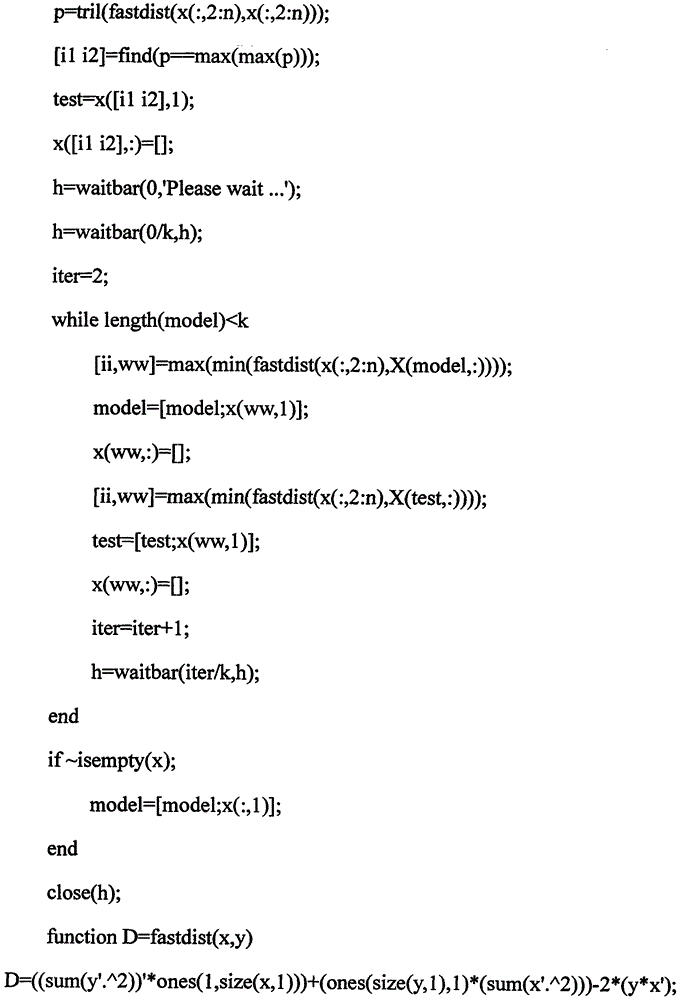Wuyi rock tea production place identification method based on deep learning
A deep learning, origin technology, applied in scientific instruments, character and pattern recognition, material analysis by optical means, etc., can solve the problem that the detection data cannot represent all the key information of origin traceability.
- Summary
- Abstract
- Description
- Claims
- Application Information
AI Technical Summary
Problems solved by technology
Method used
Image
Examples
Embodiment 1
[0075] A. Collect rock tea samples from different origins
[0076] The national standard (GB / T 18745-2006) stipulates the scope of geographical protection of Wuyi rock tea, that is, within the administrative division of Wuyishan City, Fujian Province, the present invention is located in Wuyi Street, Chong'an Street, Shangmei, and Xingxia in the Wuyi Rock Tea Geographical Indication Protection Area. Samples were collected in 11 administrative areas of Village, Wufu, Langu, Xinfeng Street, Yangzhuang, Xingtian, Xiamei, and Wutun, and 3 sampling points were randomly selected in each administrative area (in the order of A, B, C marked), a total of 33 sampling points, the sampling range basically covers the main production areas, each sampling point took 15 samples (marked with A-1, A-2...A-15), and obtained 495 copies Wuyi rock tea samples in the geographical indication protected area, and other counties and cities in Fujian Province except Wuyishan City (Jianyang, Jianou, Zhangzh...
Embodiment 2
[0131] Adopt the modeling method identical with embodiment 1, data segmentation uses Duplex segmentation procedure, with Monte Carlo interactive verification, set up neural network ELM, partial least squares (PLSDA), least squares support vector machine (LS-SVM) respectively Model, stable isotope (hydrogen, oxygen, nitrogen, carbon, strontium), trace elements (Cs, Cu, Ca, Rb, Sr, Ba, Mg, Mn, Ti, Cr, Co, Ni, Zn, Cd), electronic tongue (ZZ, BA, BB, CA, GA, HA, JB) data were spliced together in the above order, and the model recognition rates were 89.5%, 86.3%, and 78.6%, respectively.
Embodiment 3
[0133] Adopt the modeling method identical with embodiment 1, data segmentation uses Duplex segmentation procedure, with Monte Carlo interactive verification, set up neural network ELM, partial least squares (PLSDA), least squares support vector machine (LS-SVM) respectively Model, stable isotope (hydrogen, oxygen, nitrogen, carbon), trace elements (Cs, Cu, Ca, Rb, Sr, Ba, Mg, Mn, Ti, Cr, Co, Ni, Zn, Cd), electronic tongue (ZZ , BA, BB, CA, GA, HA, JB) spliced together according to the above sequence, the model recognition rates are 90.5%, 86.7%, 78.9% respectively.
PUM
 Login to View More
Login to View More Abstract
Description
Claims
Application Information
 Login to View More
Login to View More - R&D
- Intellectual Property
- Life Sciences
- Materials
- Tech Scout
- Unparalleled Data Quality
- Higher Quality Content
- 60% Fewer Hallucinations
Browse by: Latest US Patents, China's latest patents, Technical Efficacy Thesaurus, Application Domain, Technology Topic, Popular Technical Reports.
© 2025 PatSnap. All rights reserved.Legal|Privacy policy|Modern Slavery Act Transparency Statement|Sitemap|About US| Contact US: help@patsnap.com



